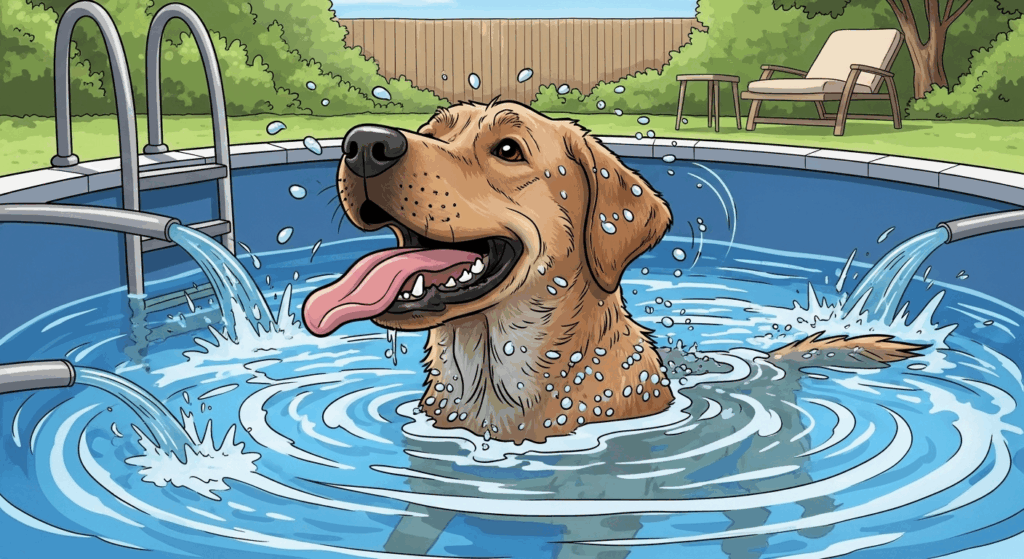The Unsung Heroes: A Day in the Life of a Canine Hydrotherapist

The water is a tranquil 30 degrees Celsius. A gentle whirring sound is the only thing that breaks the calm as an underwater treadmill starts to move. In the pool, a 10-year-old Chocolate Labrador named Buddy, who has been struggling with arthritis for years, takes a careful, buoyant step. His tail gives a slow, happy wag. Watching over him with a gentle hand on his back and a reassuring voice is his hydrotherapist.
This is a world that many pet owners don’t even know exists. It’s not about doggy swim class; it’s a highly specialized, therapeutic practice that is changing the lives of dogs. Canine hydrotherapy is a profession that sits at the intersection of veterinary science, physical therapy, and a deep love for animals. These are the unsung heroes of the pet wellness world.
So, what does a day in the life of a canine hydrotherapist actually look like? Let’s dive in.
Morning: Prep and The First Patients
The day starts long before the first wet nose arrives. The therapist’s first job is to check the pool. This isn’t just a matter of scooping out a few leaves. It’s a scientific process. They test the water’s chemical balance, ensuring it’s perfectly safe for their canine clients. They check the temperature, which is kept warm to soothe muscles and joints. Everything has to be pristine.
The first appointment of the day might be a post-operative case. Imagine a young, energetic Border Collie who just had knee surgery. The vet has prescribed hydrotherapy to help him rebuild muscle without putting stress on his healing joint.
The therapist’s role begins with a calm greeting. They review the vet’s notes and have a chat with the owner. Then, they gently introduce the dog to the water. This might be in a pool where the therapist gets in with the dog, using their hands to support them and guide their movements. Or it might be in an underwater treadmill, where the water level can be adjusted to provide the perfect amount of buoyancy and resistance. The session is short, maybe only 10-15 minutes, but incredibly focused. Every movement is deliberate, designed to promote healing.
Mid-day: Fitness, Weight Loss, and Fun
Not all clients are there for rehabilitation. The next appointment could be a Corgi on a weight loss journey. Obesity in dogs is a major health concern, and hydrotherapy is a fantastic, low-impact way for them to exercise. The therapist might use toys to encourage the Corgi to move around the pool, turning the session into a fun game. For this little dog, it’s not therapy; it’s the best splash party ever! And for the therapist, it’s a joy to see him getting fitter and healthier.
Throughout the day, the hydrotherapist acts as a translator between the dog, the owner, and the vet. They are constantly observing. How is the dog’s gait? Are they favoring one leg? What is their energy level like? They keep detailed notes on every session, tracking progress that can be shared with the veterinary team.
A Funny Splash: A hydrotherapist I know told me about a Golden Retriever who loved his sessions so much that when his owner’s car would turn onto the street where the clinic was, he would start barking with excitement. The only problem? He also loved to do a full-body shake the second he got out of the pool, always aiming it directly at his therapist. “It’s his way of saying thank you,” she laughs. “A very, very wet thank you.”
Afternoon: The Seniors and The Specialists
The afternoon might bring in the senior citizens. An old German Shepherd with hip dysplasia finds relief in the warm water, which eases his aching joints and allows him to move more freely than he can on land. For these dogs, hydrotherapy is about quality of life. It’s about giving them back a little bit of their youthful mobility and reducing their daily pain.
The therapist might also work with canine athletes. A dog that competes in agility might come in for a fitness session to build core strength and endurance, helping to prevent injuries.
The job requires immense physical and emotional strength. The therapist is on their feet (and in the water) all day. They need to be strong enough to handle large dogs safely, yet gentle enough to make the most anxious pup feel secure. They celebrate the small victories—a dog taking one more step than last time—and they provide a shoulder to lean on for owners who are worried about their beloved pet’s health.
End of Day: Winding Down and Looking Ahead
As the last client paddles their way through their session, the day starts to wind down. The therapist finishes up their detailed client notes, sanitizes all the equipment, and does a final check on the pool.
They also manage the business side of things. Confirming appointments for the next day, sending invoices, and answering inquiries from new potential clients. A specialized business like this often relies on a robust software system to manage its unique needs, such as setting up different types of hydrotherapy sessions (like assisted vs. unassisted swims) and managing the schedule.
Being a canine hydrotherapist is more than just a job. It’s a vocation. It requires a unique blend of scientific knowledge, intuition, and deep compassion. They are the silent partners in a dog’s recovery, the cheerleaders for their fitness, and the gentle hands that bring comfort to old bones. They are truly the unsung heroes of the pet world.
Are you running a specialized pet service like hydrotherapy? Pet Manager understands that your business has unique needs. Our software can be customized to manage your specific service types and schedules, freeing you up to focus on your amazing work. Discover how we can help with a FREE 30-day trial at https://petmanager.app/accounts/signup.



